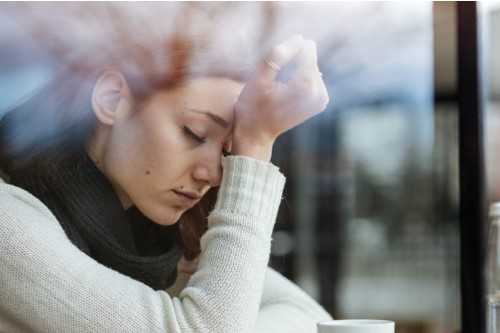What is a panic attack?
A panic attack, as defined by the Diagnostic and Statistical Manual of Mental Disorders, is “…a period of intense fear or discomfort…[that] has a sudden onset and builds to a peak rapidly (usually in 10 minutes or less) and is often accompanied by a sense of imminent danger or impending doom and an urge to escape.” (American Psychiatric Association, 1994).
Some symptoms of a panic attack are as follows:
- Elevated heart rate
- Sweating, numbness, tingling, or shaking
- Feelings of shortness of breath
- Chest pain or discomfort
- Feeling lightheaded or detached from reality
- Having chills or hot-flashes
Why do panic attacks happen?
Panic attacks can happen for a variety of reasons/situations, mostly related to anxiety. There are three types of panic attacks; situationally bound, situationally predisposed, and unexpected attacks. Situationally bound panic attacks are linked to a specific situation or trigger, in which you know the cause of the attack (for example, if you have arachnophobia, this might occur if you see a large spider nearby). Situationally predisposed panic attacks are likely to happen while a certain trigger is present but are not always linked to that specific trigger or the attack might not occur immediately after encountering the trigger. Unexpected panic attacks are just as they sound; these happen out of the blue without any inclination to what may have caused the attack.
Who can have panic attacks, when do they happen, and where can they occur?
Panic attacks can happen to anyone, anywhere, at any time – be it while you are driving, in a public place such as a restaurant or mall, or while you are at home. However, they are most likely to happen if you have an existing anxiety disorder. According to the Diagnostic and Statistical Manual of Mental Disorders, panic attacks can occur in Social and Specific Phobia Disorders, PTSD, Acute Stress Disorder, and Panic Disorder (American Psychiatric Association, 1994). It is important to note the difference between having a panic attack and having panic disorder. Panic disorder is defined by recurrent, unexpected panic attacks causing avoidance of situations linked to that attack and persistent concern about another attack happening (American Psychiatric Association, 1994). If you believe you have panic disorder, it is important to check with your neighborhood psychologist/psychiatrist and seek treatment if necessary.
Is there anything I can do to calm my attack?
Panic attacks are not dangerous but can seem so with a combination of the symptoms above. If necessary, it is completely okay to seek medical attention to make sure that it was nothing more than a panic attack. While they may be intensely alarming and scary at the specific instance, there are a few great ways to calm the intensity of the attack. According to Steve Bressert with PsychCentral, you can try to relax your muscles and concentrate on your breathing (Bressert, 2016).
A few tips for relaxing your muscles:
- Sit or lie down in a comfortable position.
- Focus on contracting specific muscle group and then letting that contraction go (for example, squeeze your hands tightly into a fist, hold for five seconds, let the squeeze go, and move onto the next muscle group).
A few tips for concentration on breathing:
- Try to take deep breaths in from the nose and out from the mouth.
- Try to make your breaths as slow and steady as possible.
- If you are having trouble with this, try breathing slowly into a paper bag or breathing slowly through a straw.
The combination of these relaxation techniques should help calm the symptoms of the attack into a more manageable state and allow you to get through the panic attack and on with your day. If you are still feeling tense after the attack, activities such as taking a quiet walk, doing yoga or Tai Chi, or stretching can aid in further relaxation and alleviate tension from the attack.
Works Cited
American Psychiatric Association (1994). Diagnostic and Statistical Manual of Mental Disorders, (Fourth Edition). Washington, DC: American Psychiatric Association.
Bressert, S. (2016). Tips to Cope with a Panic Attack. Psych Central. Retrieved on March 11, 2018, from https://psychcentral.com/lib/tips-to-cope-with-a-panic-attack/
